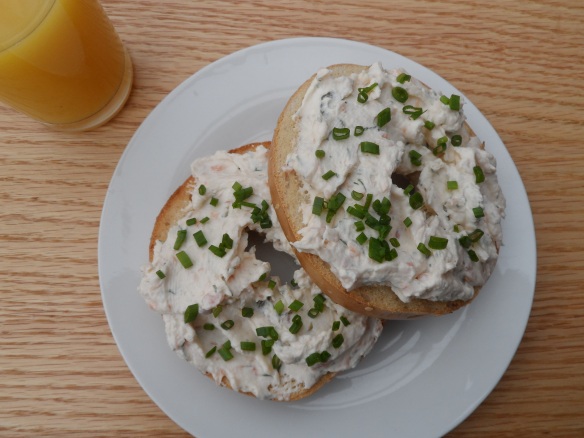I’ve written before about my love dips and there are a couple of recipes on this blog that I use regularly. A new favourite is this smoked salmon dip. Me and N were looking forward to our wedding anniversary recently and I said I’d make us a nice breakfast. Smoked salmon is perfect for occasions and I decided to make a tasty dip with some that could also be spread on bagels.
It was a perfect choice for breakfast because it was fairly light and great with some toasted bagels. Later I made some bagel chips by slicing a bagel and toasting the pieces on a baking tray under the grill. These were fun when I got into a dipping mood…and you know how that goes.
This dip can be made with some basic ingredients and the addition of smoked salmon trimmings makes it easier on the pocket. In my opinion, using the finest smoked salmon you can buy for a dip like this would be wasteful and foolish. The flavours are still just as smokey and delicate with trimmings and the result sublime.
Smoked salmon dip
300g cream cheese
150ml double cream
150g smoked salmon trimmings
12 cornichons (sliced)
1 tblspoon fresh chives (chopped)
1 good handful fresh dill (chopped)
1 heaped teaspoon horseradish sauce
sea salt and black pepper
You’ll love how easy to prepare this dip is; five or six minutes, tops! In a medium bowl, use an electric mixer to whip the double cream until it just begins to stiffen.
Add the cream cheese, horseradish sauce, dill and pepper. Combine using the mixer and finish by adding the cornichons and salmon trimmings. Mix together and then taste. Season with sea salt and plenty of black pepper.
However you choose to serve this, finish it by sprinkling a generous amount of freshly chopped chives on top. It’s not just for colour, the faintly onion flavour goes so well with the salmon and helps keep everything light and fresh.
























